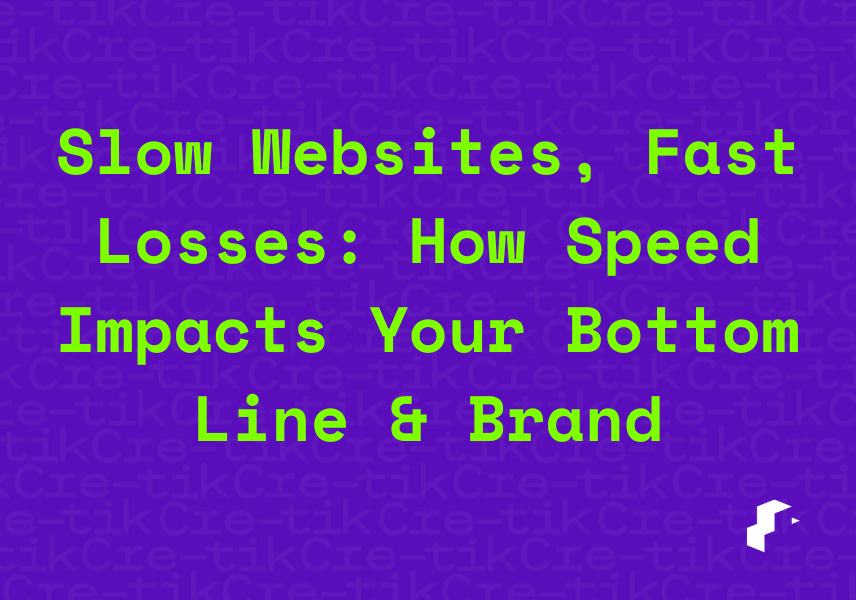In the world of technology, fostering creativity is the key to success, helping you become a leader and a standout achiever.

Introduction
In the fast-paced digital world, speed is paramount. A slow website isn't just an inconvenience; it's a significant liability that directly impacts your revenue and brand reputation. Let's delve into how website speed affects your business and what you can do about it.
1. The Direct Impact on Revenue
Increased Bounce Rates: Users are impatient. A few seconds of delay can lead to a significant increase in bounce rates. They'll leave your site and find a faster competitor.
Decreased Conversions: Slow loading times create friction in the user journey, leading to abandoned shopping carts and missed opportunities.
Reduced Page Views: Frustrated users are less likely to explore your site, resulting in fewer page views and less opportunity to engage with your content.
Lower Search Engine Rankings: Google prioritizes fast websites. Slow sites get pushed down in search results, reducing organic traffic.
2. The Damage to Your Brand Reputation
Perception of Unprofessionalism: A slow website can make your business appear outdated, unreliable, and unprofessional.
Loss of Trust: Users may question the security and credibility of a slow website, especially if they are asked to provide personal information.
Negative Word-of-Mouth: Frustrated users are likely to share their negative experiences with others, damaging your brand's reputation.
Customer Dissatisfaction: In today's instant gratification culture, slow websites lead to frustrated customers.
3. The Technical Reasons for Slow Websites
Large Image Files: Unoptimized images are a common culprit.
Excessive Plugins and Scripts: Too many plugins can slow down your site.
Poor Hosting: Shared hosting or inadequate server resources can lead to slow loading times.
Lack of Caching: Caching stores static files, reducing server load and improving speed.
Unoptimized Code: Poorly written code can significantly impact performance.
4. How to Improve Website Speed
Optimize Images: Compress and resize images for web use.
Minimize Plugins and Scripts: Remove unnecessary plugins and scripts.
Choose a Reliable Hosting Provider: Invest in a high-performance hosting solution.
Implement Caching: Leverage browser and server caching.
Use a Content Delivery Network (CDN): Distribute your content across multiple servers.
Optimize Code: Minify and compress CSS, JavaScript, and HTML.
Run Speed Tests: Regularly test your website's speed using tools like Google PageSpeed Insights.
5. The Importance of Mobile Speed
Mobile-First Indexing: Google prioritizes mobile speed.
Mobile Users Are Impatient: Mobile users expect even faster loading times.
Optimize for Mobile Performance: Ensure your website is responsive and optimized for mobile devices.
Conclusion
A slow website is a silent killer of your business. By prioritizing website speed, you can improve user experience, boost conversions, and enhance your brand reputation. Invest in website optimization and watch your business thrive.
Let’s make a free consultation call
Our experienced team of developers, designers, and strategists will work closely with you to understand your unique business challenges and objectives. By leveraging cutting-edge technologies and best practices, we’ll create customized, scalable, and future-proof solutions that drive growth and streamline operations.